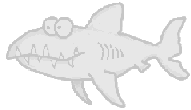|
|
| To start the server from the
install-directory: |
Do note that the default command for
the jar file is to start the -client- not the server. Ensure that
you add the -server arg to the command line call
- *nix: Execute the startServer.sh (some
configuration might be needed)
> command line option allows the use of -D to start as a
deamon
- Windows: startServer.bat
- Command Line (any platform):
Default: java -jar jauus.jar -server
Alt: java -cp jauus.jar integrity.server.IntegrityServer
- with an external Config File:
Default: java -jar jauus.jar -server -c ./conf/server.properties
Alt: java -cp jauus.jar integrity.server.IntegrityServer -c
./conf/server.properties
|
| The client can be ran in two serpate
modes |
- Default (command line): java -jar
jauus.jar
- w/Classpath: java -cp jauus.jar integrity.client.JAUUS
- Double-Click: if you OS is configured to
execute jar files, they application can be ran by double
clicking jauus.jar
|
| server.properties
( file: <install
directory>/src/integrity/server ) [top] |
<jauus>
<server>
<port>1025</port>
<config-dir>/prod/jauus/server.conf</config-dir>
<application-dir>/prod/jauus/applications</application-dir>
</server>
</jauus>
|
| Server
root: [top] |
- port: The port to start the server (Note that
on a *nix box, any port below 1024 must be started by root
which is highly recommended against
- config-dir: the directory that will house
the <application-name>.xml files . These are the
individual application config files.
- application-dir: The location of the folders
that will house the application software files
|
| Client.properties
( file: <install
directory>/src/integrity/) [top] |
<jauus>
<client>
<server>108.168.92.149</server>
<port>1025</port>
<web-server>http://www.futureFeature.net/jauus/webConfig.jsp</web-server>
<application>instacard</application>
<offline-execute>true</offline-execute>
</client>
</jauus>
|
| client
root: [top] |
- server: The location of the server
- port: port the server is expected to be
listening on
- web-server: (setting for a later relase) this
is to ask a JSP/CGI page where to look for the server if
connectivity fails to server:port of the config file. It
will also be used to send an email ... but all this is coming a
bit later. Right now I'm working on solidifying the core
business logic.
- application: this is the name of the
application which MUST match the name of the xml file under
server.properties:: jauus:server:config-dir
- offline-execute: Check auto-start setting under
<application-name>.xml to see if the application is to be
started IF connectivity fails to the server. If it
does not fail, then the the auto-start setting is checked
|
| Note: Both web-server and
offline-execute are to be completed in a future release |
| <application-name>.xml (
server.properties:: jauus:server:config-dir ) [top] |
<jauus>
<structure>
<softwarehome>myApplication</softwarehome>
<autostart>true</autostart>
<autostartargs>java -cp someJarFile.jar and.some.Main-Class.Path</autostartargs>
</structure>
<exclude>
<file-0>blah_.jar</file-0>
<file-1>two</file-1>
<file-2>three</file-2>
<file-3>four</file-3>
<file-4>five</file-4>
<file-5>six</file-5>
</exclude>
<extensions>
<jar>jar</jar>
<sh>sh</sh>
</extensions>
<excludeExtensions>
<bak>tar</bak>
<tar>tar</tar>
</excludeExtensions>
</jauus>
|
| structure
root: [top] |
- softwarehome: this is the name of the folder
that will be under the folder defined in the server. Since this
file is passed back to the client the full path is excluded for
security reasons.
An example of this is: in server.properties you have
pointed the application-dir to /prod/jauus/application.home
then you would set the <application name>.xml to point to
xervlet.
This will in turn concat the two (on the server side ONLY ) to
create a single path of: /prod/jauus/application.hom/xervlet/
in this directory would be all of your binaries,
configs..whatever you wanted to include
- auto-start: Auto-start the application after verifying
the checksums
- autostartargs: the command to start the
application
|
| exclude
root: [top] |
- file-0: name of files that are NOT to be
included in the checksum verification. If they are missing from
the client, they will not be pushed down. This is useful when
you have an older version in the same directory:
xervlet.7.13.04.jar and you have set your extensions to jar
files.
|
| extensions
root: [top] |
- jar: this can be any non-repeating xml
tag. <tag1>, <basefile>...etc. This
allows you to set the extension types, minus the files listed in
the exclude tag, that will be appended to the the PAK and
individual checksums.
|
| excludeExtensions: [top] |
- bak: this can be any non-repeating xml
tag. <tag1>, <basefile>...etc. This
allows you to set the extension type that will be excluded. It
works in conjunction with <exclude> which is a single
defined -file- exclusion tag
|





